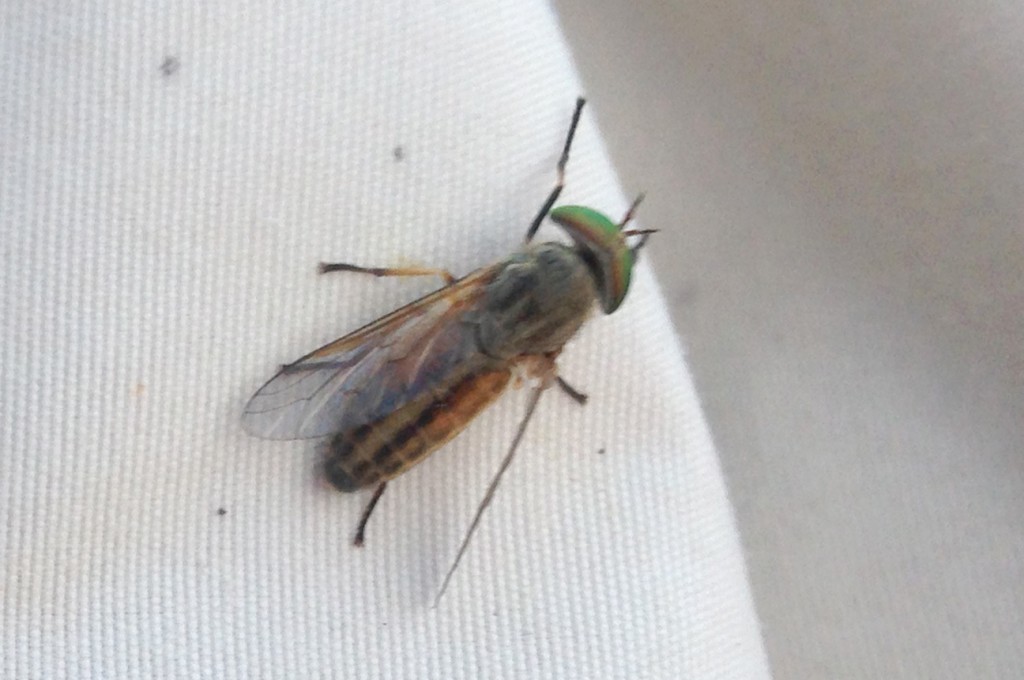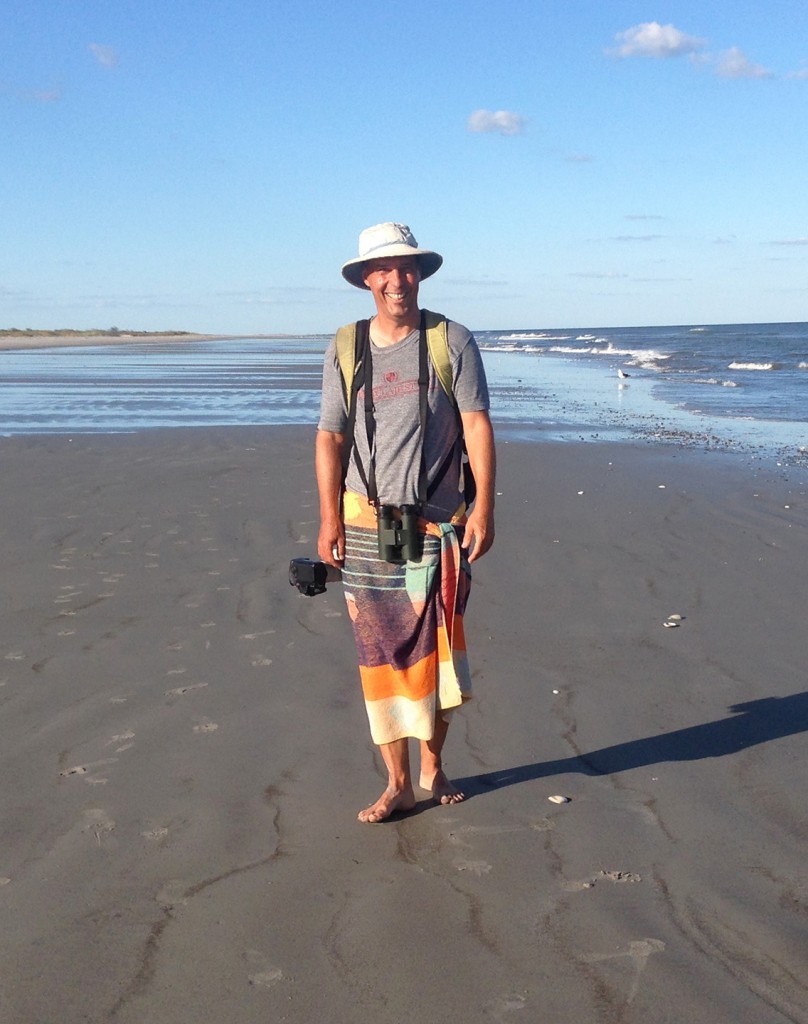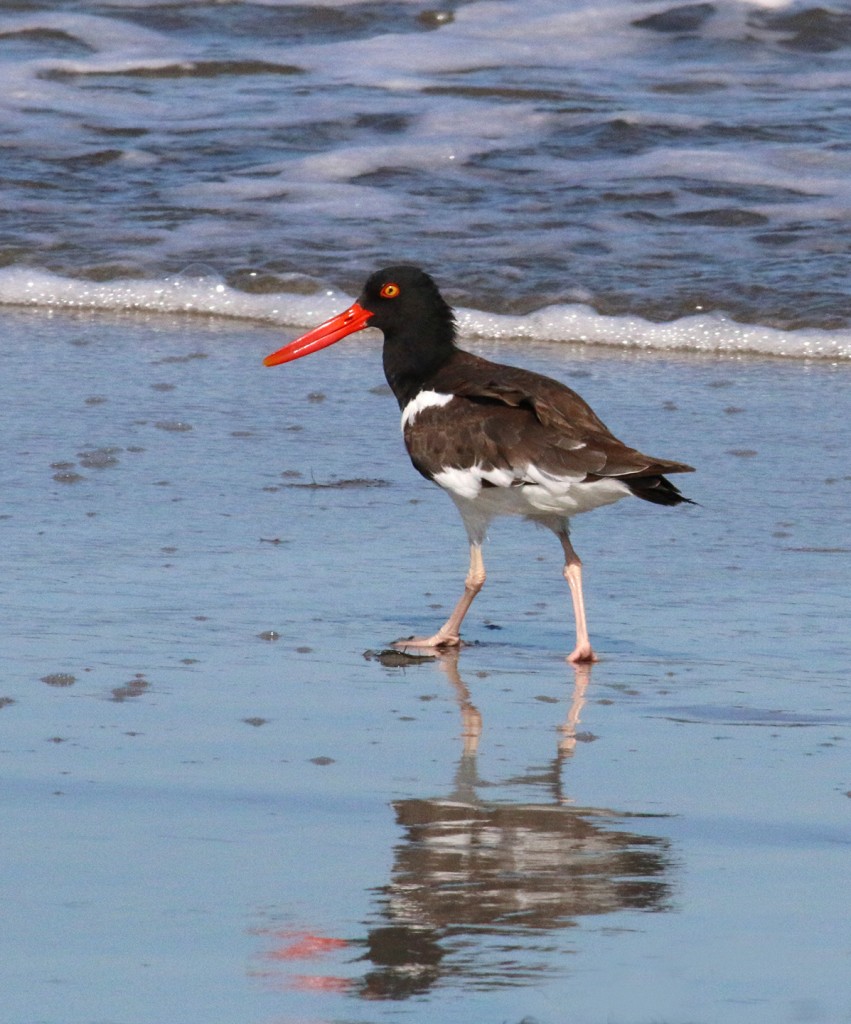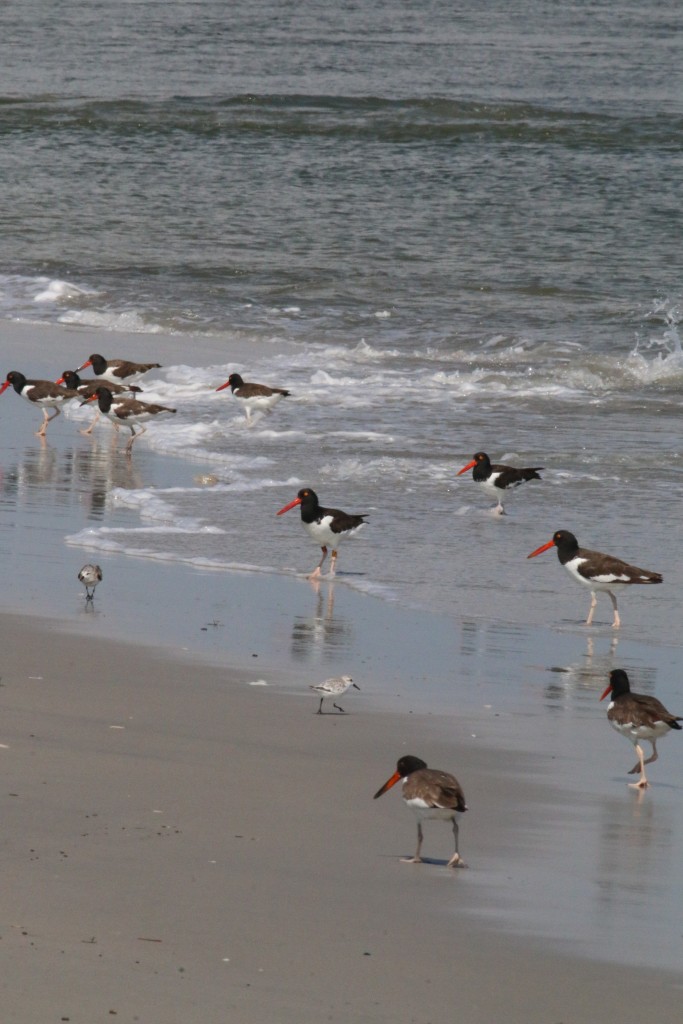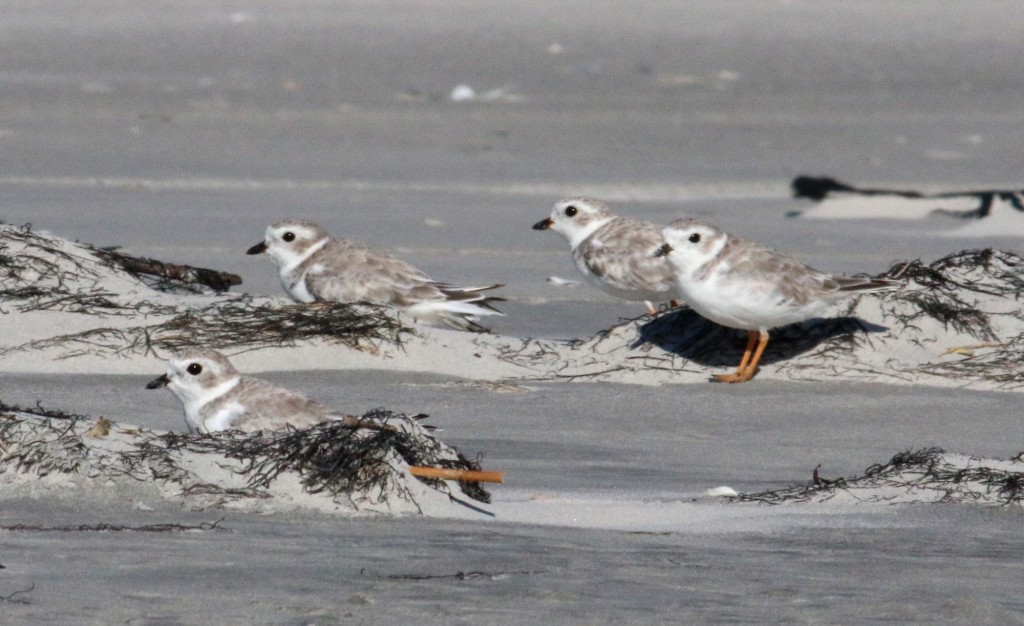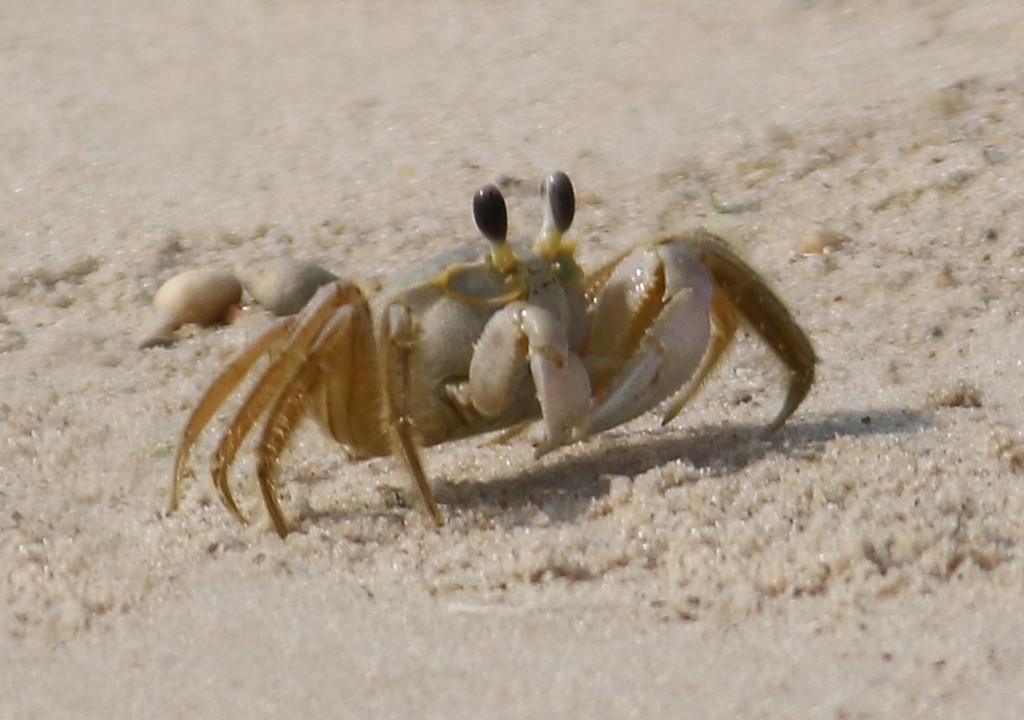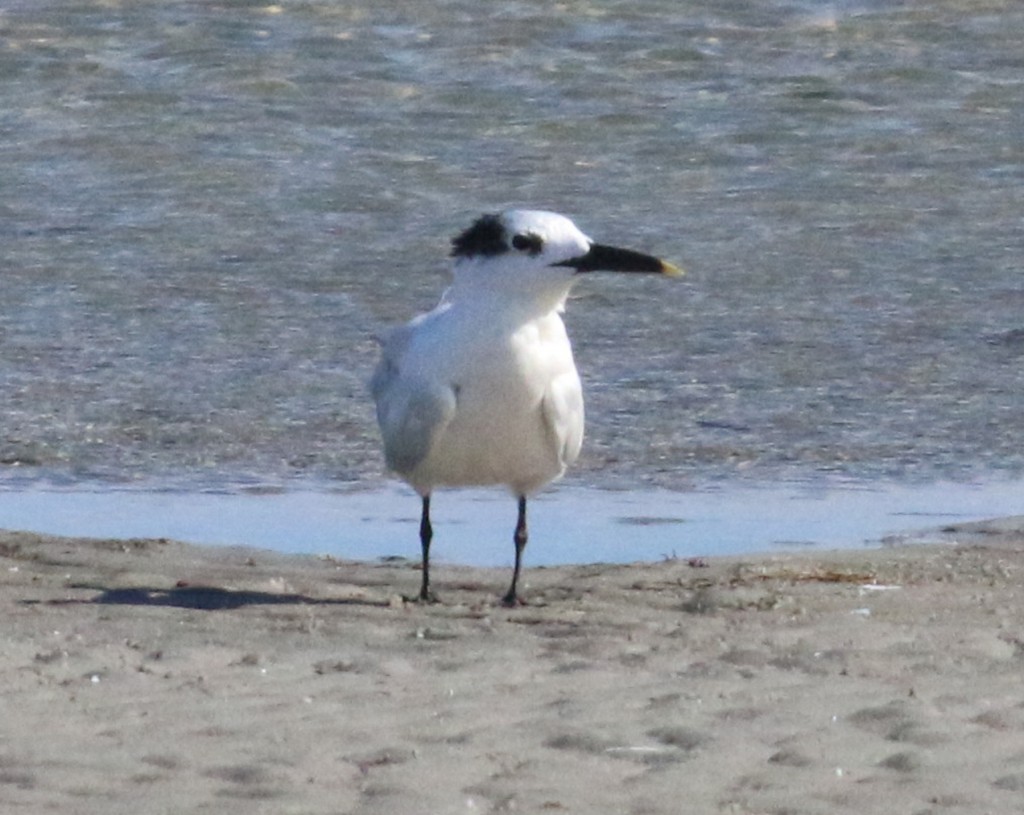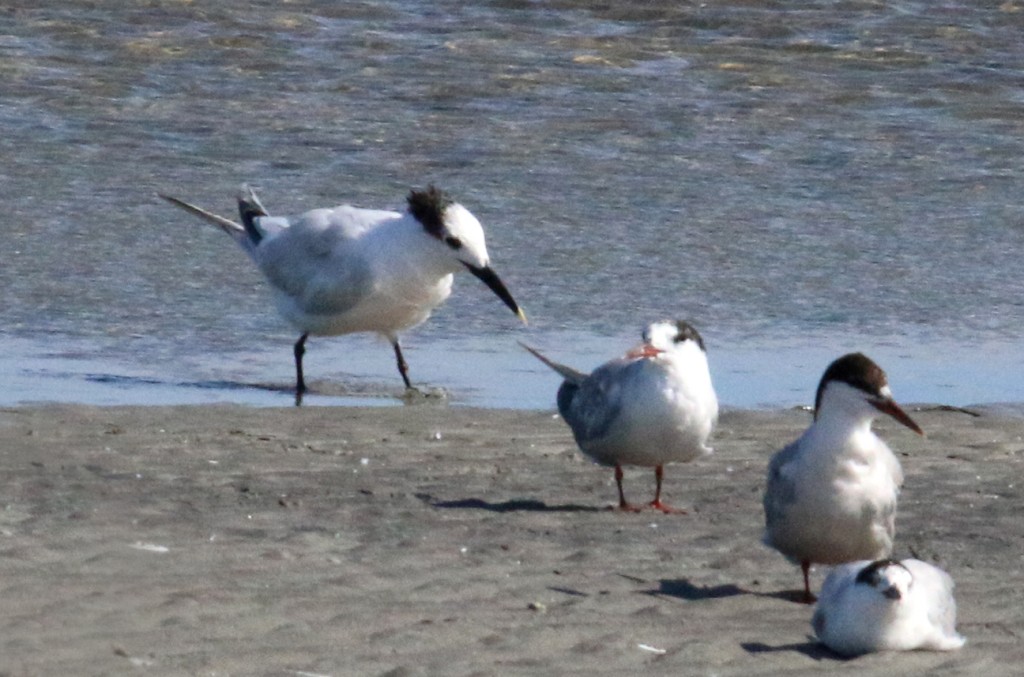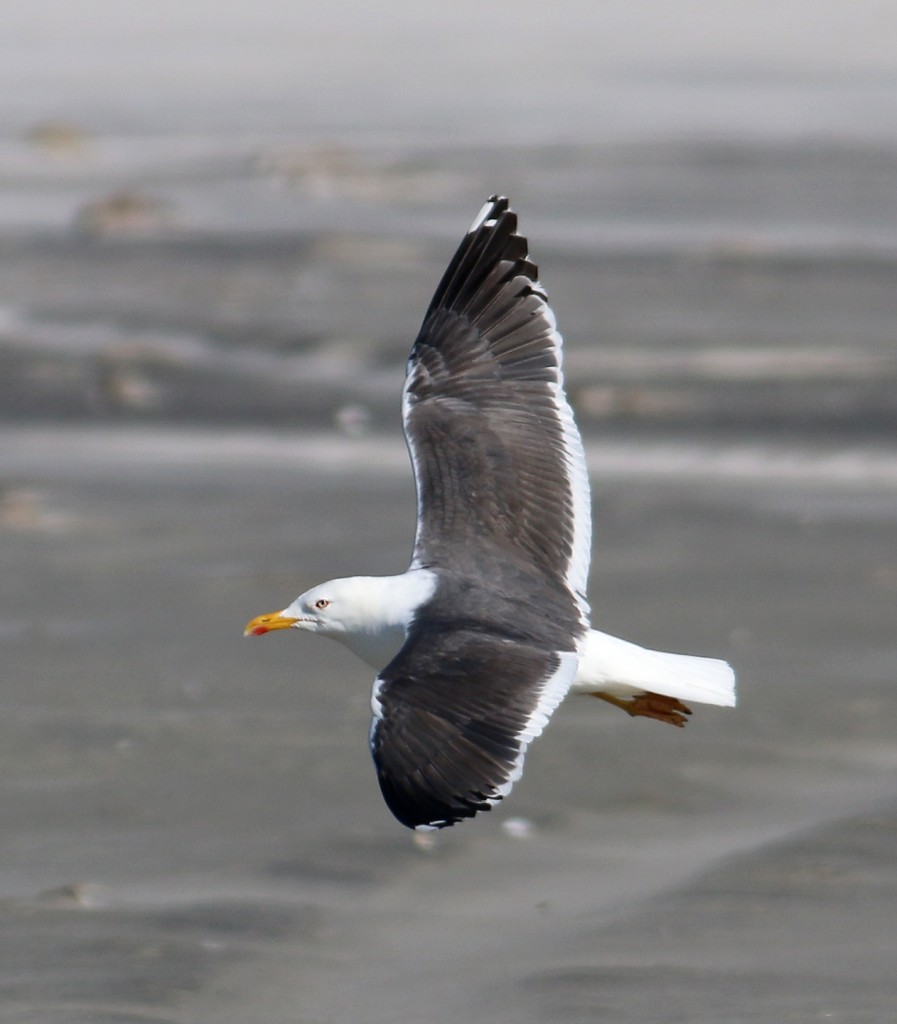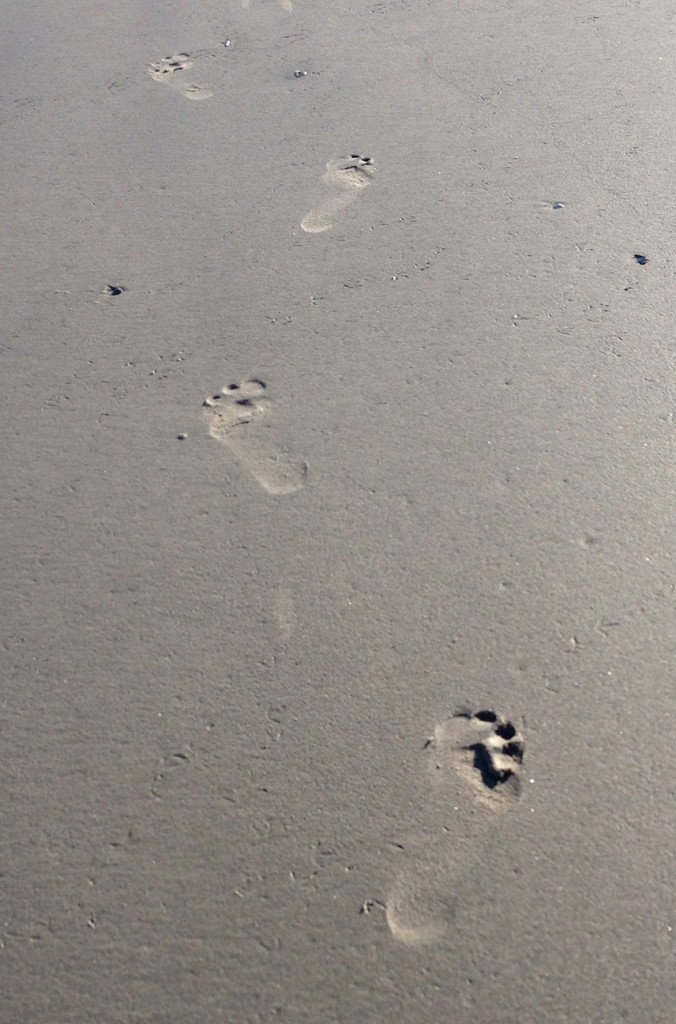Today Jeanine and I felt like doing something different. Instead of spending a day birding from a canoe, or walking in the woods, the idea was to hit the beach and see if we can find one of the rarer terns that visit New Jersey. We weren’t going to be too picky; Roseate, Sandwich, or Bridled all would do. Of course, with all the bathers out there enjoying the surf, the options for a relatively peaceful birding beach location are somewhat limited. The tip of Sandy Hook is a great choice. Parts of Island Beach State Park can be good, but seeing all the cars on the beach there is simply depressing. The beach at Holgate is very nice, but Holgate is closed until Sept. 1. We decided instead to try the North Brig Natural Area, just north of Atlantic City.
This is not a walk for everyone; it is a ~2.75 mile walk one way from the parking area to the tip of the peninsula, and that’s walking on sand with the potential for greenhead flies joining us along the way. And indeed they were present; I took to wearing a beach towel like a Tongan war garment to keep them off of my bare legs. It looks goofy, but hey, sometimes you just have to try adapt for the sake of adventure. Thankfully the ~12 mph wind kept the numbers out of ‘lets get of here’ range, into the ‘annoying’ level of being bitten. The way that I figure it, sometimes a little blood needs to be sacrificed to the birding gods for the opportunity of seeing something really good.
The walk started out great, with lots of shorebirds in the surf nearly the entire distance. There were thousands of Sanderling running in and out of the surf line, joined by hundreds of Semipalmated Plovers, a few Least and Semipalmated Sandpipers to sort through, and a smattering of gulls. The diversity wasn’t staggering, but the sheer numbers of birds was impressive, and it was simply fun to be around so many birds and to sort through that huge background to find those that were a little more interesting. In other words, my kind of birding.
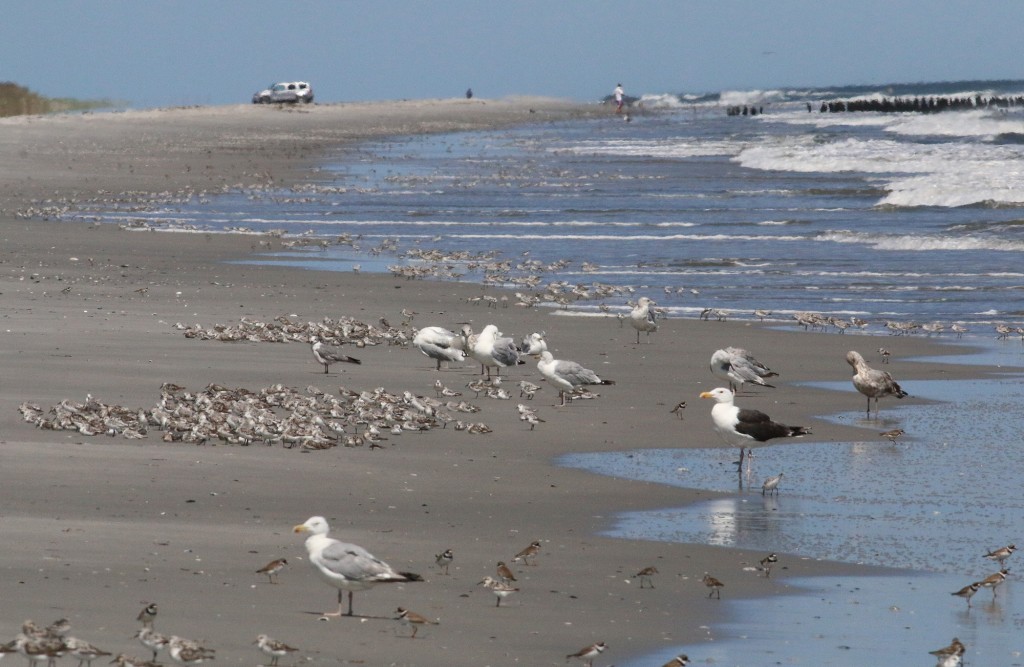
In this photo you get a sense of the number of birds that were here today, dotting the entire coastline as the tide receded.
And they did eventually start appearing. First a couple couple Ruddy Turnstones stuck out among the smaller common birds, then a singleton Short-billed Dowitcher, an American Oystercatcher here and there, and a single Whimbrel. Red Knots ranged from having a bright salmon-colored breast to those that were nearly all-gray. It was a great example of using the size and structure of the bird, not the plumage, to help to identify them. Eventually we found an area with a tight cluster of ~120 Red Knots. That’s the kind of stuff we were looking for.
Higher up on the sand and away from the surf, we were able to spot a Piping Plover that blended in so well with its background. Later on we found a cluster of these delightful and threatened birds. Any day where you can see a dozen Piping Plovers is a good one in my book. A short distance from the plover a few Ghost Crabs were popping in and out of their burrows in the sand. Cool!
We eventually made it to the tip of the peninsula, where we were alone with a flock ~150 gulls and terns to sort through. I scanned through the flock twice, counting 29 Royal Terns and two Caspian Terns and was about to give up on seeing a rarity when Jeanine suggested that I take a look at one in the scope that had a yellow tip to its bill. YES! it was our main target for the day, a gorgeous Sandwich Tern, that was larger than the accompanying Common Terns, with a shaggy Friar Tuck haircut, long black bill, and overall brighter plumage. This was the first Sandwich Tern for both of us in New Jersey. The bird separated from the flock and I was able to get a fairly distant documentation shot before it flew off towards the ocean.
A few minutes later, I noticed a dark-winged gull that was a little smaller than a nearby Herring Gull. One look at its bright yellow legs confirmed it was a Lesser Black-backed Gull, another one of our targets. This species is a common breeder in Europe, but as far as I know is not known to breed in North America, yet we can see good numbers of them occasionally here in the US. Last year we saw twelve of them on a September walk at Holgate, and we saw yet another one of them later in the walk today. The interesting thing is that the Holgate birds from last year were all immatures, while both of our birds today were adults in clean breeding plumage.
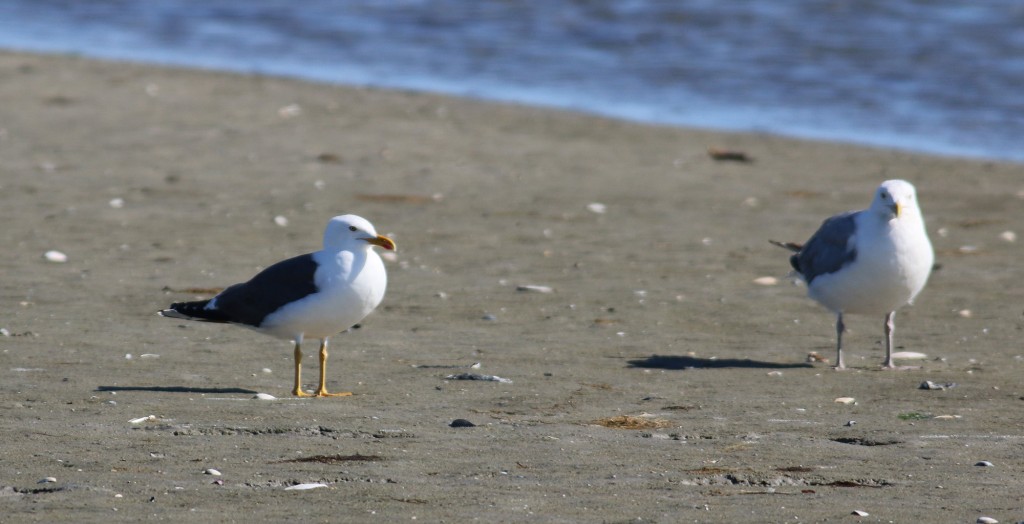
Lesser Black-backed Gull on the left, slightly smaller than the nearby Herring Gull. Look at those bright yellow legs.
It was yet another super day of birding, finding most of our target birds; I highly recommend a day of barefoot birding for a change, seeing all of these great species, and enjoying nearly constant bird activity with the sounds and atmosphere of a different side of the Jersey shore. I love barefoot birding.
